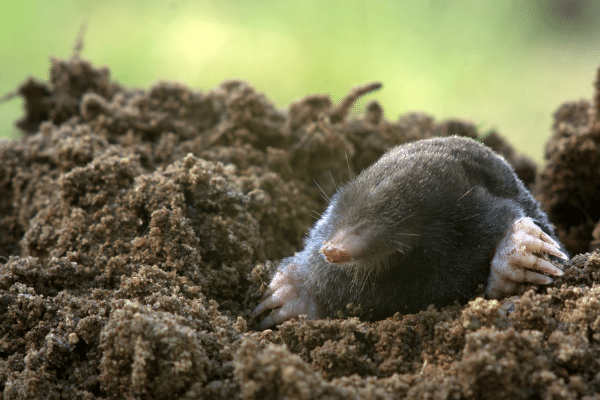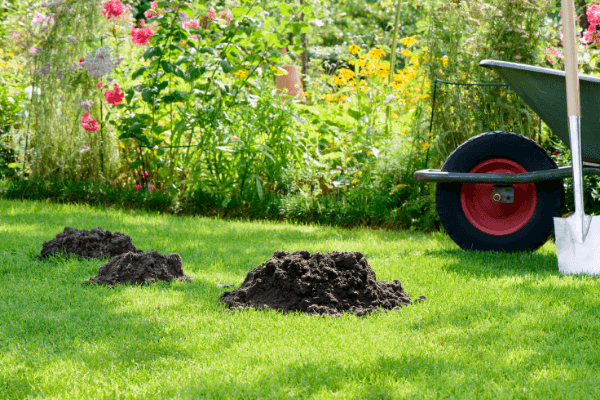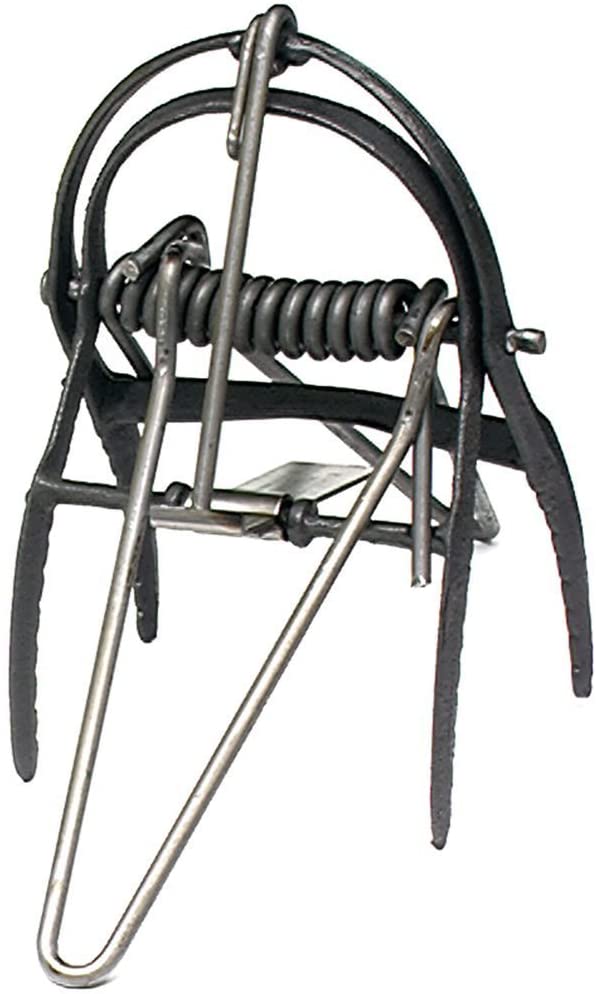- Home
- Trapping Moles
- Mole Activity
Mole Activity
This post may contain affiliate links so I earn a commission.
Mole activity can be very damaging to your lawn or garden.
Since moles often travel just below the surface, the raised tunnels they leave behind disrupt grass roots which eventually causes the grass to die.
Besides leaving behind a road map of tunnels, moles also create dirt mounds that pop up out of the surface like mini volcanoes.
Raking or removing these mounds takes time and energy, and accidentally running them over with a lawn mower often causes damage to your mower and blades.

So what can you do to help prevent mole damage in your yard this year?
Although it's a little labor intensive, trapping is the most effective way to eliminate them.
However, simply digging a hole and setting a random trap won't work.
Taking a few minutes to learn about a moles behavior, and how to properly set a trap will greatly increase your success rate and keep your lawn looking great.
Mole Activity Facts
Moles are insectivores and feed on earthworms, grubs and other small insects.
Since earthworms are their preferred food, they tunnel through your lawn in search of a tasty meal.
Moles don't actually eat grass roots and plants, however, the tunneling process disrupts the root system which causes them to die.
Since moles can create surface tunnels at the rate of approximately 18 feet per hour, it doesn't take long for a single mole to create a lot of damage.

You will typically notice mole activity the most during the spring and fall when the temperatures are moderate and there's a decent amount of moisture in the ground.
This creates a suitable environment for worms, which draws the worms closer to the surface.
Since the moles follow the earthworms, you begin to see their damaging effects.
The mole damage tends to decrease during the summer and winter months because either the ground is too hot and dry, or it's frozen.
Moles don't disappear when the ground is dry, they simply go deeper in search of earthworms and you just don't notice their tunnels.
Many people believe that moles are only active at night which is not true.
Moles move throughout their tunnels during all times of the day.
A typical mole can travel through an existing tunnel at the rate of approximately 80 feet per minute!
Removing Moles From Your Lawn
With so many conflicting remedies and products on the market, it's easy for a homeowner to become confused about controlling moles in their lawn.
Unfortunately home remedies such as hot pepper, razor blades, moth balls, castor oil, ammonia and other items placed inside a mole tunnel are not effective ways to control a mole population.

Trapping a mole is the best way to remove them from your lawn.
Since trapping is not for everyone, a professional can be called to take care of the problem for you.
However, a professional can be expensive so if you want to save money and trap them yourself you can purchase a few inexpensive mole traps at your local hardware or home improvement store.
The three most common and popular mole traps are the scissor trap, plunger trap and choker loop.
Set each trap according to the manufactures specifications for best results.
Overall
The "here today gone tomorrow" mole activity can be confusing and frustrating to many homeowners.
Start looking for fresh mole sign early in the spring as soon as the ground warms up.
Once you locate mole damage, set a couple well placed traps and you'll be able to prevent moles from destroying your lawn.



